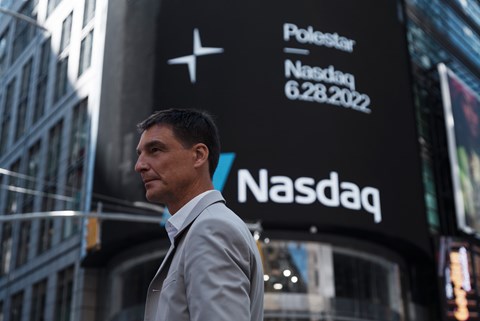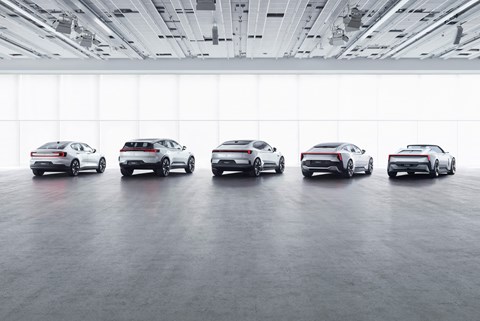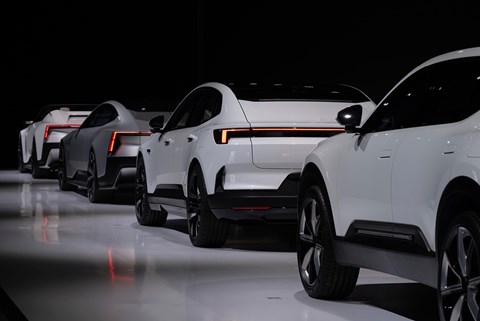► CAR talks to Polestar’s CEO, Thomas Ingenlath
► Splitting from Volvo, future model plans
► ‘No more going to Mummy and Daddy for money’
This has to be Polestar’s year. Created in 2017, listed in 2022 and with just 55,000 cars delivered in 2023, ‘the European Tesla’ has so far struggled to emulate the sales or stock-market successes of its Californian rival. Its share value spent most of last year heading in the wrong direction and in February this year, Volvo – the company that created Polestar in a joint venture with Geely – announced it would cease funding and look to reduce its stake, handing the reins to Geely.
Volvo’s news prompted a slew of negative headlines. But a little over a month on, Ingenlath – the designer (Audi, VW, Skoda, Volvo) turned CEO – has been through the pain and come out the other side.
‘It was always clear the money we needed should not come out of the pockets of our owners,’ he explains. ‘We had to find financing that wasn’t simply going to Volvo and Geely saying, “Mummy, Daddy, we need more money”. That was always the point, and we talked about the financing and equity required to cover this $1.3bn. At the end of 2023 we were well progressed but we couldn’t at that stage say more. Then of course, when we were finally able to announce we’d raised $950m [from 12 international banks, announced in late February] it was two weeks too late to counterstrike the headlines that came when Volvo announced they would reduce ownership, and everybody thought like, “Oh, this is a big crisis situation!” For us it was a non-dramatic situation.

‘The plan was always for Volvo to let off ownership. And it will still be the partner with whom we need synergies with manufacturing, the service network and so on. That was the original idea. But it was a little bit more of a surprise when it finally happened.’
Ingenlath points out that Polestar has long been developing cars outside Volvo’s sphere of direct influence. The 2 saloon, based on the same CMA platform as the XC40, has a good deal of Volvo DNA, as does the new 3 SUV. But the 4 coupe-SUV is much more Geely, and the in-development 5 (a Porsche Taycan rival) and 6 (roadster) use Polestar’s own bonded aluminium chassis technology.
‘In Geely we will have different owners of course, and that’s a good thing,’ says Ingenlath. ‘We needed a bigger free float, and this is something that is changing as we grow up as a company and develop cars not only with Volvo.

‘This has been happening for a while – looking into the group and thinking about the tech that’s there. This toolbox; this is something that has happened before and that’s alive today. And let’s face it, the tech that is developed in the Geely group is very interesting. A lot of good things are happening in China in terms of technology.’
But with other Geely brands like Lotus, Volvo and Zeekr all eyeing the same technology, isn’t there a risk of homogeneity?
‘You don’t become a great chef because you found that one vegetable nobody else is using,’ counters Ingenlath. ‘It’s how you cook the meal. Everybody’s cooking with meat, pasta and vegetables. It is not about what ingredients you put in there. It’s what you make out of them. Volvo has something very outstanding with the EX90. But, I mean, if you don’t see the difference between the EX90 and the Polestar 3 then I don’t know what more we can do.’
A key Polestar differentiator, at least in the minds of those who engineer its cars and own them, is an engaging, rewarding driving experience, even if the brand’s beautifully clean, tech-heavy marketing is often light on the thrill of driving.
Ingenlath: ‘Our segment is very premium, expensive cars, and that’s where we want to convince. We are definitely not just building computers on wheels. We are building cars that are amazing to drive. We acknowledge that driving can be a very physical, emotional experience, and it needs a lot of craftsmanship and knowledge to tune these cars so that they are not just a piece of software but actually a really nicely performing physical thing.’

The 5 and 6 will play important roles as performance flagships when they finally arrive. But that’s in the future. Ingenlath knows that, after years of development and hefty spending, it’s right now that matters. ‘As a company we have been planning for a long time,’ he says. ‘But it is important to be really alert for the right now. We cannot fail in launching the 3 and 4 in a successful way.’
This story originally appeared in the May 2024 issue of CAR magazine. Want access to great features and articles from the archive? Sign up to become a CAR magazine Subscriber!